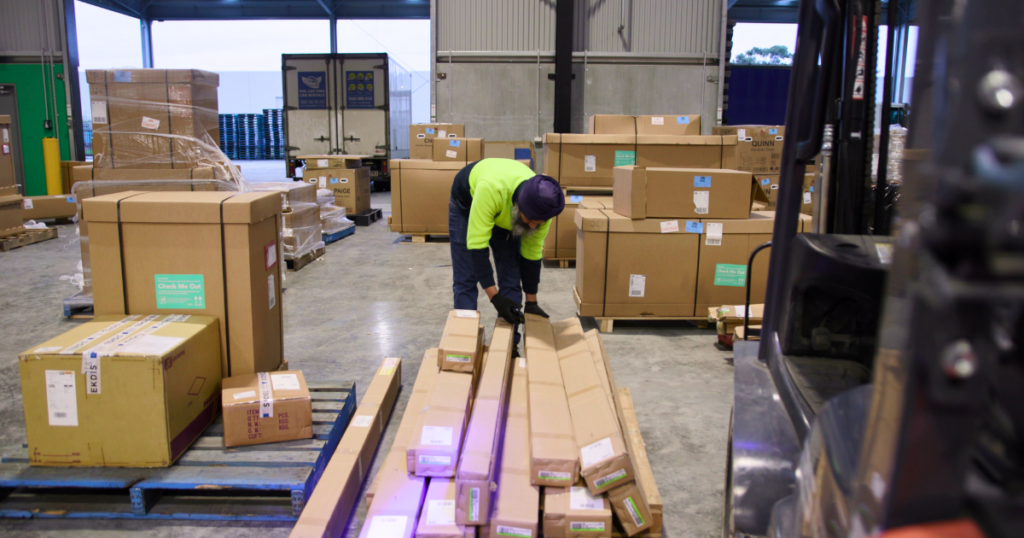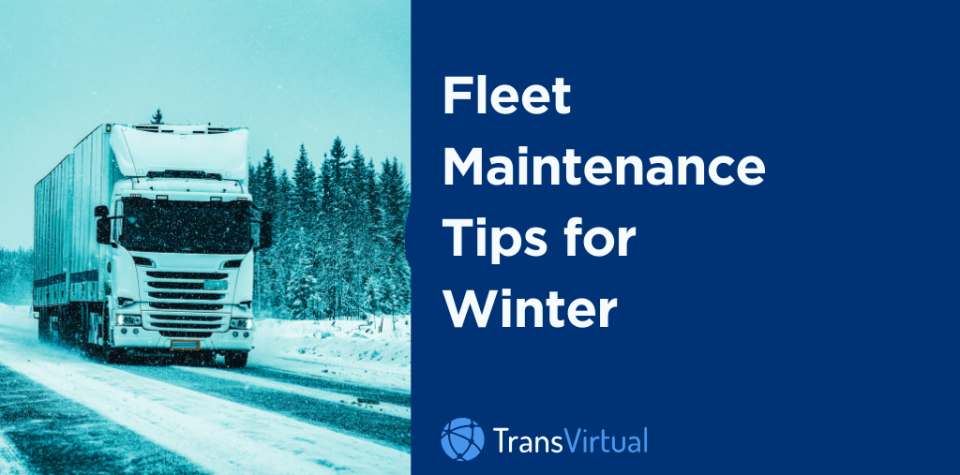Table of Contents
Winter is coming – so it’s best to start prepping your fleet!
As the temperatures drop and the days get shorter, Australian logistics operators face unique challenges in preparing their delivery fleets for the winter months. While winter in Australia may not bring blizzards and mounds of snow like other parts of the world, it still presents its own set of challenges that can impact the efficiency and safety of logistics operations.
In this blog post, we are going to look at the importance of preparing your fleet for the season, how winter road conditions differ from summer, and the role of transportation management software in streamlining fleet maintenance ahead of the winter season.
So, while it’s still nice outside, why not pour yourself a cold beverage and enjoy the last of the golden weather as we give you some pointers about preparing for the coming winter months?
“In the Bleak Mid-winter”
Winter in Australia brings cooler temperatures and increased rainfall, particularly in southern and eastern regions.
Areas in Northern Territory, Western Australia, and Queensland are known for their warmer winter temperatures. In the Snowy Mountains region of New South Wales, winter can otherwise mean heavy snowfall and below zero temperatures.
Speaking of heavy snowfall, worst cases can lead to road closures and eventually, disruptions in the supply chain.
And while snow is rare in other parts of the country, heavy rain and strong winds can create hazardous driving conditions, leading to further delays.
Road surfaces are a big topic to talk about during winter season. Cooler temperatures can cause roads to become slick and slippery. This poses a significant safety risk for drivers who operate heavy vehicles.
5 Effective Fleet Management Tips for Winter
1. Check tyre and chain condition
Proactively rotating your tyres is a great first step when preparing your fleet for winter. Regularly check tyre pressure and tread depth to ensure safe braking.
Tyre chains offer additional traction by assisting your tires as they dig into snow and ice. They’re a great alternative to dedicated winter tyres and can be useful when navigating off-road terrains like dirt and mud.
2. Schedule maintenance checks ahead of time
At this time of year, you need to be proactive in scheduling maintenance checks and servicing your delivery fleets ahead of the winter season.
After the heat and dust of summer, filters and couplings need to be cleaned and checked to ensure they are working efficiently. Cold weather can exacerbate existing mechanical issues and increase the likelihood of breakdowns, which can lead to costly delays and disruptions in your logistics operations.
It is recommended to perform each quarter a deep detail of all your vehicles by a professional fleet detailing service provider to ensure your fleet is not only looks clean and shiny on the outside but also fully operational inside.
3. Keep vehicle maintenance records
Of course, make sure you regularly maintain vehicle maintenance records! A helpful tip is to remove paper-based processes to prevent losses and the overall hassle of tracing manual paperwork.
4. Have your winter kits ready
Ensure that your drivers are winter-ready by preparing the essentials. We’re talking about ice scrapers, snow brushes, blankets, and first-aid kits. It’s also good to have antifreeze and winter-grade windshield washer fluid ready to prevent freezing.
5. Train and educate your drivers
Your fleet vehicles might be ready, but are your drivers are prepared to brave through the winter weather? Educate drivers on safe winter driving techniques, including maintaining vehicle distance, reducing speed, and avoiding sudden manoeuvres.
Don’t forget to leverage a TMS!
Transport management systems (TMS) have features that allow you to track vehicle maintenance schedules and proactively identify issues. You also get to track your fleet in real-time, allowing you to dynamically change routes when road conditions are unfavourable.
Bonus: Supply and Demand Planning

Preparing for winter isn’t just about ensuring your fleet and staff are ready for the changing conditions. Winter also brings about changes in demand and the way people shop. So being prepared for these different aspects is just as vital as making sure the tyres are pumped up.
Make room in the warehouse
Warehouse management software (WMS) and sales and operations planning (S&OP) software play crucial roles in helping companies prepare for the retail variables brought about by winter weather. WMS enables companies to optimise inventory management by accurately forecasting demand based on historical data and current market trends. With the onset of winter, retailers may experience fluctuations in consumer preferences, such as increased demand for cold-weather apparel, heating appliances, and seasonal food items.
By integrating weather forecasts into WMS, retailers can adjust their inventory levels and procurement strategies to align with anticipated demand, ensuring that they have the right products in stock to meet customer needs.
Changing weather means changing demand
During the winter months, retailers may face challenges such as supply chain disruptions, transportation delays, and fluctuations in consumer spending patterns.
Sales and Operations Planning (S&OP) software enables companies to conduct scenario planning and “what-if” analysis to assess the potential impact of these factors on their operations and develop contingency plans accordingly.
By incorporating weather forecasts and historical sales data into their S&OP processes, retailers can enhance their forecasting accuracy and make data-driven decisions to optimise their supply chain performance.
Get ready for the Winter Weather with TransVirtual
Preparing for winter is essential for Australian logistics operators. It is easy to get lulled into a false sense of security by our long, hot summers where the weather hardly changes for weeks. But change it will, so you need to be ready to navigate the challenges posed by cooler temperatures and inclement weather conditions.
By proactively preparing your delivery fleets and streamlining maintenance scheduling and route planning with logistics software, you can minimise disruptions and ensure smooth operations throughout the winter months.
If you’re on the lookout for a reliable TMS that lets you stay on top of fleet maintenance schedules and offers a range of end-to-end features, make sure to schedule a commitment-free call with our experts today.


